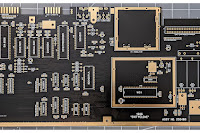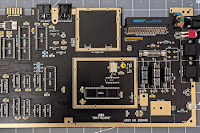Ok. So. You have all the gear. You have a camera, you’ve messed about with manual mode and you’re vaguely familiar with the exposure triangle. You’ve got yourself a competent tripod. Maybe you’ve upgraded from the stock lens and maybe you’ve got a couple of filters coz you’ve heard they can help. What’s next?
Here in Scotland, winter is definitely upon us. The days are biting cold of late and the weather is changeable – we can expect everything from gales, lashing rain or drizzle to bright clear skies. Sunrise is around 08:45 and Sunset around 15:45. The potential for great light is pretty high but the potential to get very cold and very wet is pretty high too and the temptation to stay inside all cosy and warm is almost overwhelming. On my days off, there are still things to do – houses don’t clean themselves and meals, sadly, don’t magically appear on demand. All the mundane things need to be taken care off and making time, forcing yourself out of the house with the camera, is often a herculean effort – with no guarantee of any payback at all.
Obviously I can’t speak for anyone else, but the above paragraphs are a pretty accurate description of where I’m at right now. And last week, still in the lethargic throes of Hogmanay excess, it was a pretty lazy, tired and downright unfit me that dragged his carcass out of the house for a much needed walk by the coast with the primary aim of walking off a few of the many thousands of unnecessary calories imbibed and clearing the head to face whatever horrors 2019 has to throw at me. The sky was not particularly promising with very little in the way of clouds and the temperature was hovering about 0 Celsius (32 Fahrenheit) but I strapped my camera gear (all 20lbs of it) to my back in any case, mainly because I need to acclimatise to carrying all my gear. Getting a photograph really was not at the top of my to do list. My wife decided to join me so I was not alone on this particular wee adventure.
The walk we chose wasn’t particularly arduous – a three mile round trip on good even surfaces, for the most part. Around halfway we paused and took a seat on a dry rock watching some pretty spectacular waves hammer the few miles of coast we could see from that point. I had a wee explore of the area, checking out a few rock pools and having a good think about the scene I found myself in. Looking south, across the rocks, the sun was low, about 30 minutes from setting. I could see it was going to set behind some trees on the horizon a little bit inland. Between myself, the rocks in front of me, and the setting sun was a little bit of the rough sea and some low farmland. The whole vista looked interesting but lacked any distinct focal point. For that reason it was one of those scenes that was lovely to be in, but not great to photograph. My thinking, however, was that if the sun were to bring a little bit more colour to the few clouds on the horizon just as it dipped behind the trees, that might create a focal point where there wasn’t one and bring enough interest to enliven everything to make a photograph worthwhile.
This was going to present enormous problems however. The rocks in my foreground were volcanic in origin and pretty dark, and given that they were now backlit I had very deep shadows to contend with. Secondly, the sky with the setting sun was extremely bright giving me the very brightest of highlights. This was worst case scenario stuff and made it very difficult to simply compose, never mind expose, as I was really struggling to see anything other than silhouettes of the foreground rocks with the naked eye. Here's a couple of pictures showing the extent of the problem:
Having plenty of time to mess around I used a 3 stop Graduated ND filter, the strongest I have, to see what effect this would have in darkening the sky but whilst it helped, it did not help nearly enough and it was very rapidly apparent I was going to have to bracket as well - the example pictures above were both taken with the GND filter. So with 25 minutes until sunset I started experimenting with my exposure. I made the decision very early to use a narrow aperture (f/20) because I wanted a sunburst effect and this would also help to keep the foreground rocks in focus – albeit at the expense of a little diffraction. ISO was staying at 100 and, on the tripod, shutter speed would be whatever was necessary – pretty quick for the shots to darken the sky, and pretty slow to brighten the rocks.
I took about 70 pictures – all just experimenting before the sun was in position and then, suddenly, it was all a bit frantic. The sun was only behind those trees for a few moments, and to avoid nasty lens flare I really did have to wait until the last minute before it finally disappeared and so I had to fire off the necessary shots very quickly. I figured if I had 8 pictures covering the full range of light that should be enough to get something and I guess this is where experience kicks in – if I was doing this more often I would be far more familiar with exactly what was needed to get the desired result. Instead I overcompensated. Still, I was overcompensating with a big old smile on my face as everything came together exactly as I thought it might. For the record, the shutters speeds were in the range of 1/25th of a second to 1.3 seconds, all at f/20, ISO 100.
Let’s summarise. On the positive side – I saw something with potential, I anticipated what was going to happen and what might make the scene better (position of the sun, potential colour in the sky and the decision to get a sunburst). I also knew that I’d need to bracket even with a GND filter on. On the negative side – inexperience meant I took far more pictures than necessary and once I found the initial composition I stayed anchored to my tripod and didn’t explore potentially better areas in that location.
In post processing I ended up using three of the 8 pictures, manually blending the correctly exposed parts of each to get the final, uncropped composition you see here. I also removed two small, errant lens flares from around the foreground rocks and added a slight vignette.
 |
| Blended composition |
Now, I’m not saying that picture is perfect, not at all, but it is a pleasing and accurate representation of the scene I saw and conveys the barren nature of the place very well. With the sun being so bright the eye is naturally drawn to it first. As a focal point that works great. Overall it feels balanced with the large, slightly lighter rocks on the left giving some weight to that side and preventing the dark rocks in the mid-ground from being too dull and boring. If I have one complaint it is that there are no obvious leading lines from the foreground to the background and so it lacks an easy path for the eye to follow, and I do wonder if the mid-ground rocks are still too dark.
Obviously I could tinker with this further in post processing ad nauseum, but I’m not really inclined to at the moment as this is pretty much as I intended without looking over processed – it retains a wild and rugged feel whilst still being very simple. I like that. The takeaway here though is that I’m now starting to create photographs, rather than just snap them, which is definitely progress. Whether I’ve created anything worthwhile… well, that’s whole different article.
So, to answer the question that I posed at the start, what’s next is to keep getting outside, keep plugging away and learning the lessons from each failure and triumph but above all, to use that hard earned gear to create photographs that make me happy.




